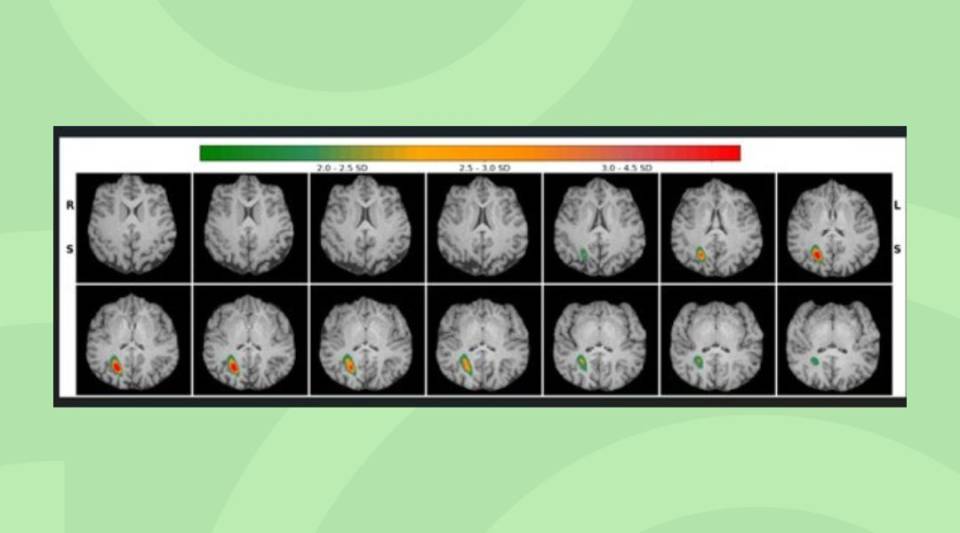- What is it?
- Causes and risk factors
- Symptoms
- Diagnosis
- Treatment
- Progression
- Living with the disease
- Research lines
- Frequently asked questions
Causes and risk factors in Multiple Sclerosis
Multiple sclerosis is a disease of unknown cause in which, probably, an environmental factor induces an abnormal immune response in a genetically predisposed individual.
The immune system recognises one of the patient’s own proteins as foreign and thus destroys the myelin (fatty material that covers and protects the nerve fibres of the brain and spinal cord), the oligodendrocytes and, secondarily, the nerve fibres (axons).
A recent study has proved that Epstein-Barr virus (EBV), that causes mononucleosis among other diseases, has a crucial role in the development of multiple sclerosis. The risk of developing this disease considerably increases in people that have been infected by EBV. However, having had the infection is not enough to develop the disease, in fact, there is data confirming that up to 95% of the population has been infected and has not developed multiple sclerosis. To date, it is unknown if the relationship between both is causal, and the same happens regarding the possible mechanism involved.
Multiple sclerosis and the immune system
The immune system is the defence system against infections, tumours and other foreign elements. It is composed of different organs and tissues, cells, and proteins (antibodies). From among all the components of the immune system and in a very schematic way, we could say that the most important cells of this system are the white cells (leucocytes). These are divided into:
- Phagocytes. These are cells capable of capturing microorganisms and cell remains (in general, all classes of useless or harmful particles for the body) and intruding them to their interior with the aim of destroying them, in a process known as phagocytosis. They form part of the innate system and act as a main barrier against pathogenic agents.
- Lymphocytes. These are the cells responsible for the adaptive or specific immune response. They distinguish the cells that belong to the body itself from foreign material, and produce chemical substances to destroy that material. They also memorise that material in order to prevent it from causing the same process. The lymphocytes are divided into T and B lymphocytes, and have specific agent receptors that the immune system recognises as foreign (antigens).
In multiple sclerosis, there is initially an adaptive immune system response (lymphocytes). The genetic predisposition of the individual and the exposure to an unknown environmental factor triggers the onset of autoreactive (autoimmune) T lymphocytes.
After the activation of these lymphocytes, a cascade of events is produced that lead to the release of inflammatory mediators, harmful substances that damage the myelin, and the oligodendrocyte. This damage, in turn, activates the immune system again, amplifying this anomalous reaction.
Furthermore, the innate immune system (macrophages) also comes into action, activating phagocytosis mechanisms. This leads to the destruction of the myelin sheath. This demyelination of neurons is partly responsible for the degeneration of the nerve fibres (axons) and the degenerative changes associated with the disease.
Risk factors in Multiple Sclerosis
Environmental factors in multiple sclerosis

North-south gradient. When further away from the equator, more frequent. White Caucasians, especially those who have ancestors from the north of Europe, have a higher risk than individuals of Asiatic, African, or native descent.

In immigrants, the presentation frequency differs from that of their parents. If someone emigrates before 15 years of age from a country with a low frequency to another of a high frequency, the risk is the same as the indigenous population.

High levels of vitamin D and sunlight.

Virus infections. Several epidemiological studies associate the Epstein-Barr virus, which causes infectious mononucleosis, with multiple sclerosis.

Tobacco. Is associated with developing it and with the earlier appearance of the progressive secondary form of the disease.
Genetic factors in multiple sclerosis
Multiple sclerosis is not hereditary, but there is a certain genetic disposition. For the general population with no affected relatives, the risk is 1 case for every 1,000 inhabitants; for first-degree relative of an individual affected, such as son/daughter, brother/sister, or non-identical twins, the risk is from 2.5 to 5 cases per 100 inhabitants, and in the case of both parents being affected it increases to 20 per 100 inhabitants.
Substantiated information by:


Published: 20 February 2018
Updated: 20 February 2018
Subscribe
Receive the latest updates related to this content.
Thank you for subscribing!
If this is the first time you subscribe you will receive a confirmation email, check your inbox


